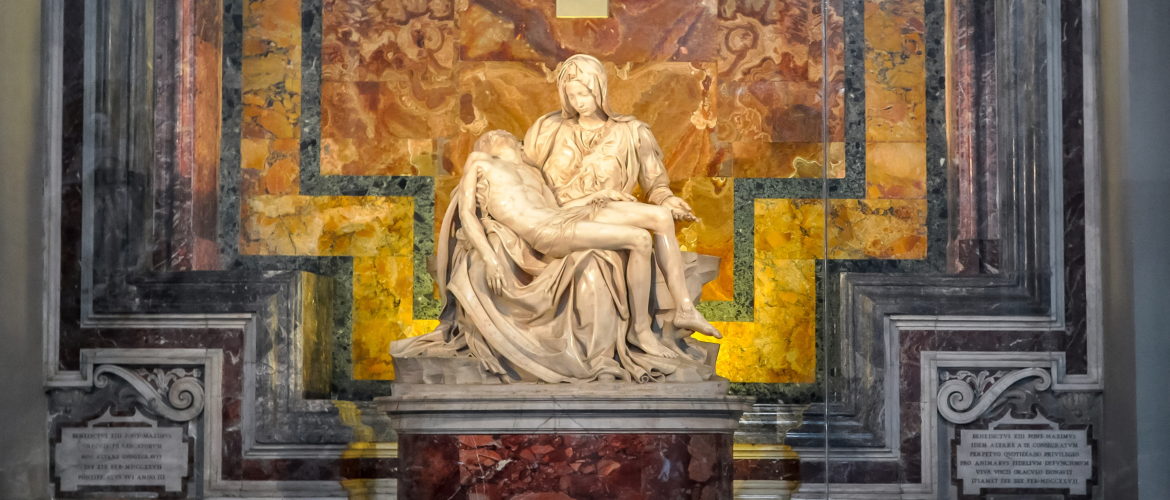The Most Beautiful Marble Catholic Sculptures

Catholic sculptures and paintings, along with Orthodox icons, defended their right to exist many years ago. Adherents of iconoclasm in the early and middle Medieval periods tried to prove the sacrilege of the image of God and the Virgin Mary in visible and material artworks and to prohibit their veneration. However, the destruction of religious images was declared a heresy by the Council of Constantinople, which gave an opportunity to painters and sculptors of the next centuries to create amazing artworks on religious themes.
Catholic sculptures were less popular than paintings because of the complexity of the creation process. Nevertheless, they were demanded by cathedrals for the altar and temple spaces, as well as by the nobility for home decoration and tombstones. Some gorgeous examples of Catholic sculptures of the past are still preserved in the old Renaissance and Baroque temples.
The Most Beautiful Catholic Sculptures
Pieta by Michelangelo, 1498–1499
Pieta was ordered by French Cardinal Jean de Bilheres Lagraulas for his future tomb in St. Peter’s Basilica. The customer wanted the sculpture to become the most beautiful in Rome, and Michelangelo implemented that requirement. Pieta is a rare 15th-century multi-figured composition, which presents the Virgin Mary lamenting over the body of the crucified Christ. Textures of skin and draperies make the viewer doubt it is stone. The sculpture reflects pain, longing, suffering, and acceptance of the Virgin Mary at the same time. Michelangelo managed to create a deep, psychological portrait from the piece of cold marble.
Ecstasy of St. Teresa of Avila by Bernini, 1647–1652
Ecstasy of St. Teresa of Avila is a key work in the career of the Baroque sculptor Bernini. It represents the episode of “religious ecstasy” of the Carmelite nun Teresa of Avila. The work caused many debates because of the image of obvious sexual subtext, but the artist more likely used such interpretation as the most suitable incarnation of the emotional experience of the nun. Besides, ideas of sensuality and embodiment were very popular in the Baroque period, and this image became a great part of a picture of the perception of the world in the 17th century. Despite all the disagreements, the sculpture impresses with its execution, compositional perfection, clarity and smoothness of lines, and vivid communication of emotion.
The Veiled Christ by Giuseppe Sanmartino, 1753
The Veiled Christ, which is kept in the Museum of San Martino, was commissioned by Raimondo di Sangro. It depicts the body of Christ after the Crucifixion, covered with a transparent shroud. The master conveyed the cold skin of the limp body, a distended vein on the forehead, and wounds on arms and feet through sliding pleats of material, all made from marble. This image of Christ became the symbol of suffering and redemption.
Most Catholic sculptures were, and still are, made from marble, one of the most complicated materials. However, when the sculpture is carved by a genius, you forget that it is stone in front of you and enjoy the amazing beauty of craftsmanship.
